Tag: welding diploma

Welding is undoubtedly worth exploring if you’re looking for an interesting career path that allows you to use your hands and create tangible results. Welders use metal to build various structures, from intricate decorative pieces to reinforcements for our bridges and large buildings. Several industry-specific competencies and soft skills are required for success as a welder. As with any career path, quality training is an excellent place to start.
North American Trade Schools offers a comprehensive Structural & Pressure Vessel Welder Diploma Program to equip you with all of the skills you’ll need to be employed in the welding field with confidence. Math for welding, health and safety concerns, and welding theory are just a few topics covered at length in our program. In addition, students can practice their welding skills in practical labs. Keep reading to discover what skills you can expect to learn in our training program and how they’ll help you succeed.
1. Physical and Administrative Capabilities Are Required
Welding is a physical job that requires a fair amount of strength and endurance. Everyday welding tasks include lifting, twisting, and bending to assemble and dismantle heavy-duty equipment. Welders also benefit from a steady grip as they must hold a torch steady for extended periods. After welder training, your eyes will be as important as your hands. Excellent depth perception, hand-eye coordination, and close vision will help you create consistently accurate results.
While having a physique is beneficial, administrative skills are equally as important.
Welding is a project-based career path. To succeed, you should possess excellent project management skills. This involves effective time management to meet deadlines, good project planning, organization, thorough documentation practices, and teamwork.
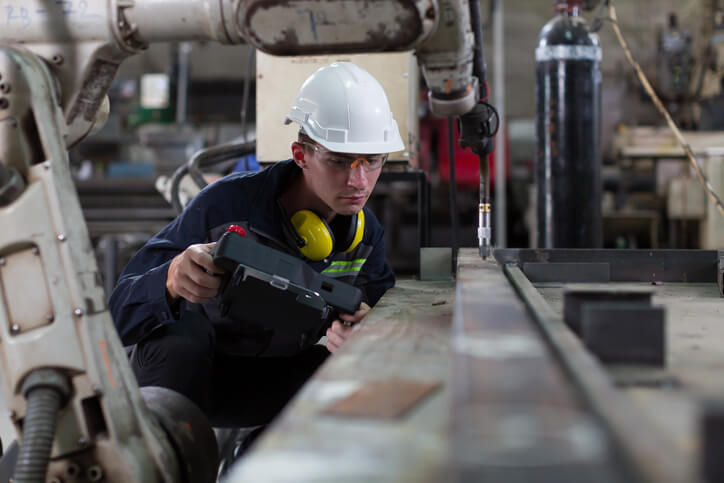
Though much of your work as a welder will be done independently, effective communication skills are essential to your productivity since you must collaborate with other team members, supervisors, and others working on your job site or factory.
2. Attention to Detail and Numerical Skills Help in Welder Training
Welders are required to produce results with minimal flaws. If you’re naturally detail-oriented, you’ll be well prepared to notice and fix grease buildup, corrosion, bubbling, and cracks on your work. As a welder, parts, material, and equipment inspection will be a regular part of your role, which requires taking note of issues quickly.
Your attention to detail will also help you maintain a safe work environment since you will often work in dangerous surroundings after welding college. In addition, flaws in your work could have public safety implications, so it’s important to make double and triple-checking a habit. Like other welding skills, you will have plenty of opportunities to refine your attention to detail during training as you learn what imperfections to look for in materials, equipment, and your projects.
Though you won’t need to understand advanced algebra to succeed as a welder, numerical skills are handy. Our Structural & Pressure Vessel Welder diploma program covers basic math for welders, which will help you calculate dimensions, interpret sketches, read blueprints accurately, and understand two- and three-dimensional diagrams. Good math skills will help you with your day-to-day welding tasks, logical reasoning, and problem-solving on the job.
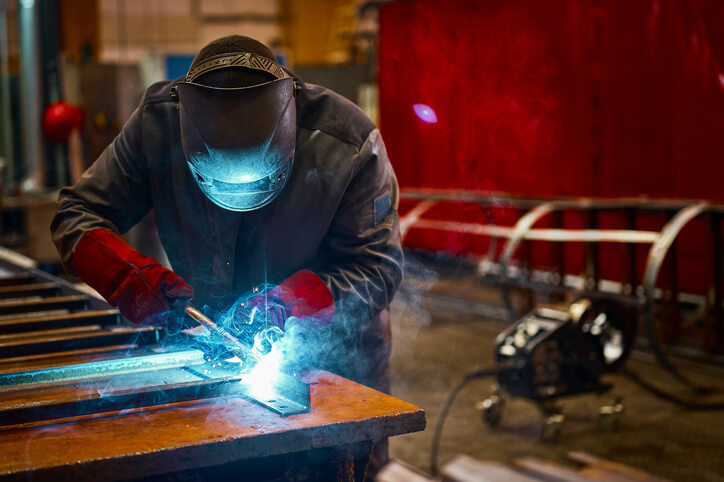
3. Mechanical Skills Will Help You Use Tools Properly
Welders work on various projects and must understand the technology and tools that will make their work more accessible and more effective. In our program, you will have the opportunity to practice using welding equipment in a state-of-the-industry lab environment under the supervision of our expert instructors.
Students learn how to use modern tools for welding, commonly used techniques like gas metal arc welding, gas tungsten arc welding, flux cored arc welding, and shielded arc metal welding. If you’re mechanically inclined and enjoy learning about new technologies, this part of your welding training will undoubtedly be fulfilling.
If you have what it takes to become a successful welder, start training today! The Structural & Pressure Vessel Welder diploma program will help you transform your natural aptitudes into highly marketable skills in an exciting industry!
Are you ready to earn your welding diploma?
Contact NATS to learn how you can get started.
 In the welding world, gas tungsten arc welding (GTAW)—also frequently referred to as tungsten inert gas (TIG) welding—produces welds via a process using tungsten electrodes. A shielding gas protects the weld pool area from air pollution, and inert gases such as argon, helium, or a mixture of the two are used.
In the welding world, gas tungsten arc welding (GTAW)—also frequently referred to as tungsten inert gas (TIG) welding—produces welds via a process using tungsten electrodes. A shielding gas protects the weld pool area from air pollution, and inert gases such as argon, helium, or a mixture of the two are used.
Due to the high level of precision in this form of the trade, GTAW is typically reserved for high-quality jobs requiring more attention to detail. It’s also the form most appreciated by experienced welding practitioners, due to its ability to turn out stronger welds with cleaner, more artful results and higher integrity.
To understand more about GTAW welding, let’s take a look at five interesting facts about this method.
1. It Takes Longer to Master Than Other Welding Types
The finicky welding method of GTAW requires a lot of practice to perfect. In fact, it’s usually only attempted once a welder has a solid grasp in some of the more basic forms of the trade, such as metal inert gas (MIG) welding.
The more complex GTAW procedure requires a non-consumable tungsten electrode to run a current through the metals the technician is looking to weld together. After the metals have been liquified by the heat of the electrode, the filler material is hand-fed into the weld pool. Those interested in a welding career should know that this method is slower to perform than more basic “point and shoot” one-handed weld methods, and is a lot more difficult for inexperienced users to accomplish.
2. It Requires a Lot of Focus
Any type of welding is reliant on lots of concentration to avoid mistakes and accidents. If you’re attending welding school, you’ll be interested to hear that GTAW welding requires an even sharper level of focus. Both hands are needed to work on a GTAW job, with the welding torch in one hand and the filler material in the other.

A lot of concentration and a steady hand are needed to feed the wire as the operator attempts to move smoothly through the weld. The clean results at the end of this painstaking process come from a lot of patience, along with razor-sharp focus to prevent mishaps and unsightly errors.
3. Its Ability to Apply Controlled Heat Allows for Cleaner Results
On GTAW welds, a foot pedal controls the electricity coming to the torch, allowing for a level of deep penetration and accuracy that prevents the arc weld splatter one might get with a more basic type of welding. This control of the heat allows for much cleaner results—perfect for more advanced, high-precision jobs.
The welder doesn’t even necessarily need filler material here to get a successful join. This is important to remember, as welding requiring any filler material is usually a messier procedure. The precise metal-to-metal welds that GTAW welding enables allows for the operator’s desired smooth, clean surface. Producing an aesthetically-pleasing pattern and uniform bead, these welds often need no more than a light polish to finish.
4. It’s Ideal for Working on Stainless Steels
GTAW is well-suited to working on thin sections of light metals, including magnesium and aluminum. The method is particularly favourable for use on stainless steel welds. This is partly due to the aesthetics of these jobs, where the uncoated fabrication of the material means the weld remains exposed for the world to see. Additionally, stainless steels are a more expensive metal type, requiring significantly tidier finishes.
5. It’s More Expensive for Welding Career Pros to Complete
Due to the level of precision and attention to detail required, a GTAW weld is one of the most time-consuming jobs to complete. The process also has a low deposition rate to consider, with this rate measured in pounds per hour, deposited at a particular welding current. Additionally, a lot of GTAW welding equipment is at least twice as expensive as more basic tools of the trade.
Factoring in the time required from the highly-skilled welder multiplied by the hourly rate, plus the cost of resources needed on higher-quality jobs, these welds are much more costly to complete than other forms of the trade.

Interested in pursuing a thriving career by earning your professional welding diploma?
Contact North American Trade Schools today for more information on its exciting welding diploma program!
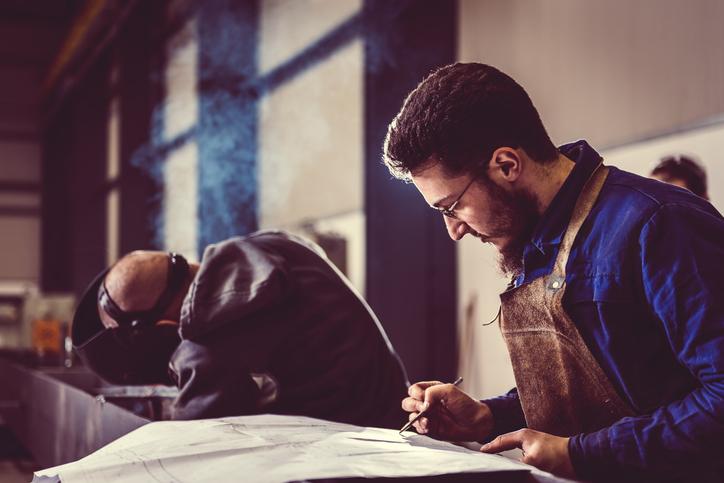
When you first look at welding symbols, you may be overwhelmed by the seemingly arbitrary shapes and numbers. However, despite what you initially think, these symbols do have deeper meaning—and knowing this meaning will work wonders for your future welding career.
These symbols are often found on welding project blueprints, and are used to communicate between the designer and the welder. Without understanding these symbols, you won’t know what specifications a weld requires.
If you’re interested in becoming fluent in the language of welding symbols, read on!
Welding Symbols 101 for Those in Welding Training
Welding figures generally consist of five main figures: arrow, leader line, reference line, tail, and weld symbol (not to be confused with the welding symbol, which represents the entire diagram). Confused yet? Let’s explain them figure by figure.
The arrow, for starters, points to the part of the diagram where the weld is needed. Attached to the arrow is the leader line, which intersects with the reference line. In the middle of the horizontal reference line is the weld symbol: this represents the type of weld required. Finally, at the opposite end of the reference line, you may find the tail—it is only required for special instructions—which forks off in opposite directions.
How to Interpret Welding Symbols
As you’ll learn in welding training, the location of the weld symbol vis-à-vis the reference line determines which area of the joint you should perform the weld.
If the weld symbol is under the reference line, you should make the weld on the same side as the arrow. However, if the weld symbol is located above the reference line, you should make the weld on the opposite side of the arrow. But if the symbol is on both sides of the reference line, then, as you can imagine, you must perform the weld on both sides.
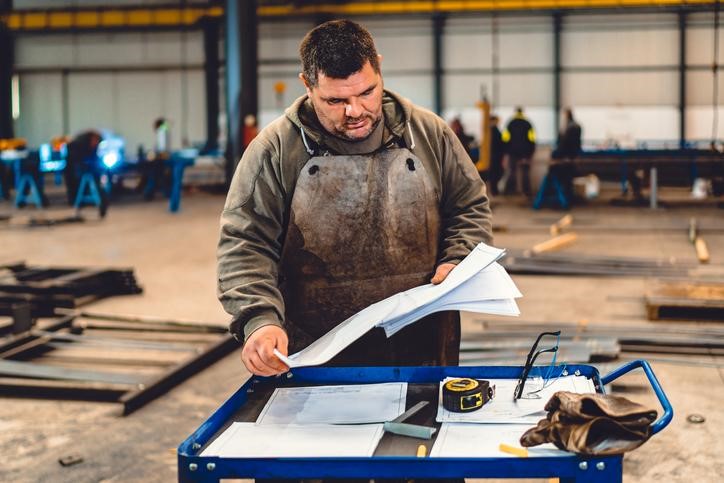
Understanding Dimensions and Angles in Welding Symbols
In addition to shapes and lines, welding symbols can also include numbers that communicate the depth, diameter, and length of a weld–along with the beveling angle, if applicable.
In many cases, you will find the weld diameter (or width) on the left-hand side of the weld symbol. The length of the weld is found on the right. If the length is not indicated on the welding symbol, you should conduct the weld from the beginning of the joint to the end.
The reference line also plays a part in understanding the dimensions of a weld, just as it did for the weld type. Any dimensions indicated below the reference line pertain to the joint on the side of the arrow. Dimensions above the reference line pertain to the joint on the opposite side. If dimensions are indicated on both sides of the reference line, then you should weld both sides of the joint.
If these numbers, figures, and placements seem complicated, fret not—welder technician training is there to help you decipher these symbols with ease.
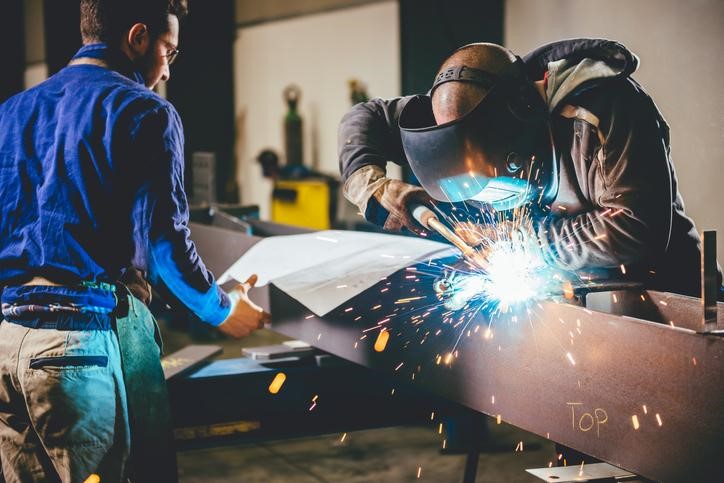
Do you want to get your welding diploma?
Contact North American Trade Schools to get started!
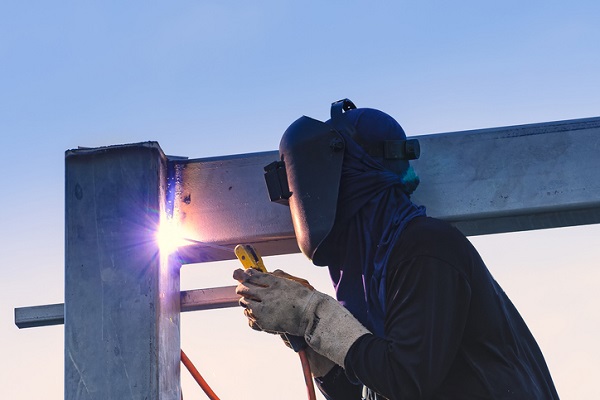 Welding is a great job to have if you want to travel. Although you might not think it at first, a welding career can open up several different opportunities for travelling, in a number of different work environments. Working as a travelling welder—or “road warrior,” as they’re called—can be extremely exciting, and it also gives you the opportunity to demonstrate your knowledge of the craft in various locales.
Welding is a great job to have if you want to travel. Although you might not think it at first, a welding career can open up several different opportunities for travelling, in a number of different work environments. Working as a travelling welder—or “road warrior,” as they’re called—can be extremely exciting, and it also gives you the opportunity to demonstrate your knowledge of the craft in various locales.
With many situations in which those in the field can perform their duties while seeing various parts of the country, welding is a field with plenty to look forward to after your training. Here are three opportunities in the welding industry that can involve travelling.
You Can Pursue Work as an Underwater Welder
If you have a love for both welding and swimming and have a strong willingness to travel, this could be the ideal way for you to marry the two. By working as an underwater welder, you’ll be working in aquatic locales in rivers, lakes, and oceans to help repair or construct infrastructure, such as dams, oil rigs, pipelines, ships, bridges, and more.
Underwater welding is only for the most experienced of welders, and to get this job you’ll also need your diving certification, which you can pursue after your welding diploma. Since underwater welders are a relatively rare breed, this is definitely a career choice that could result in you travelling or relocating entirely.
You Could Also Become a Structural Welder for Industrial Buildings
As an industrial structural welder, you can travel between factories during shutdowns to repair or maintain industrial buildings and energy plants. In this kind of role, you can expect to spend a significant amount of time on the road, going to the facilities where your skills are required. Industrial shutdown work is often fairly easy to come by, even if major plants tend to have a limited period of being shut down (i.e., about a week or so). However, being able to travel frequently and for certain stretches of time could be a definite boost to your welder career—not to mention you’ll be helping manufacturers keep their plants running smoothly.
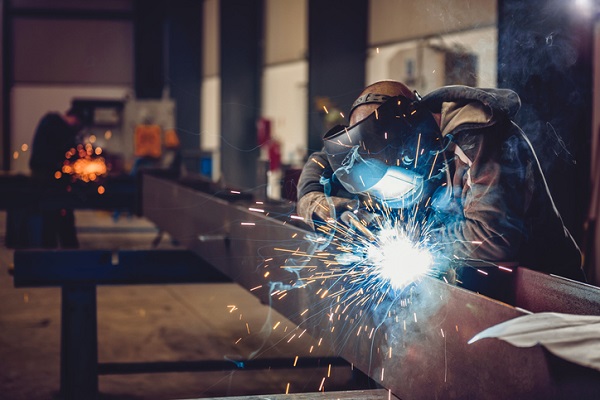
You Could Also Work at Shipyards or on Ships in Your Welder Career
Becoming a welder in the shipping industry can also be an exciting opportunity if you’re intrigued by the idea of taking your skills out to sea. Not only is there plenty of variety to be found in the industry as a welder, but the breadth of locales you could find yourself working in can also make this kind of job a particularly rewarding one. You can help to construct various types of ships—in which case you would work in a shipyard—or you could do maintenance tasks onboard a ship, which can involve living on the ship while it is at sea. In either case, the locations where you could find yourself working can be wide ranging. Likewise, onboard maintenance welding jobs can result in you working in different countries often, such as if you’re working on a cruise ship or container ship.
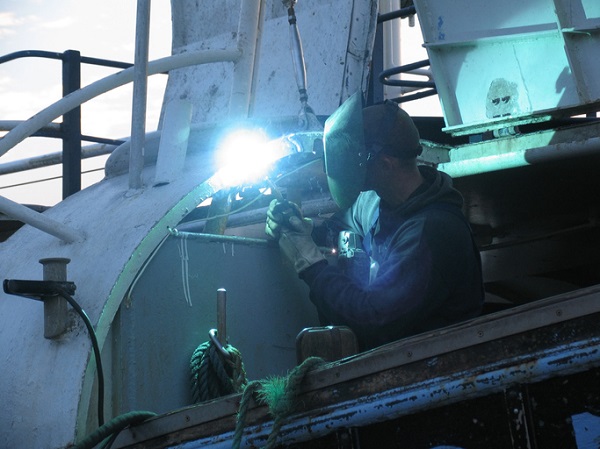
Want to start your welding technician training?
Contact North American Trade Schools to learn more!
Why Learning About Shielded Metal Arc Welding Can Help Your Welding Career
September 10, 2019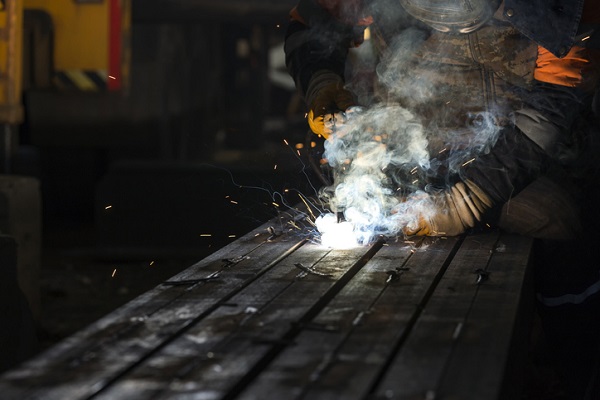
It’s an essential process for aspiring welders to learning, but how exactly does it work, and why do you need it in your welding career? Shielded metal arc welding (SMAW)—known by some as “stick welding”—is where a weld is made through an electric current that forms an arc between a weld pool and a flux-covered electrode, leading to the formation of gases that shield the weld pool and give it a layer of slag. As a result, the weld is protected from contamination.
Being one of the most basic and oldest welding techniques, SMAW may seem at first like it has a big learning curve, but it is actually quite simple once you’ve fully understood its inner workings. Here’s how SMAW works, and how it can be helpful for you and your welding career.
Those in Welding Technician Training Should Familiarize Themselves With the Process
Since it’s one of the simplest processes in welding, it goes without saying that those hoping to have a career in the profession should understand how shielded metal arc welding works. First, the electrode briefly comes into contact with the workpiece, striking the arc, which results in parts of the electrode being passed onto the weld pool before the covering disintegrates and forms protective gases. With the power source connected to a circuit, one of its two output terminals makes a connection with the electrode either with alternating current or direct current. Additionally, SMAW electrodes contain covering with various elements and materials that allow the welding process to be carried out, as not having the covering would make the arc hard to maintain and cause the weld bead to be improperly shaped.
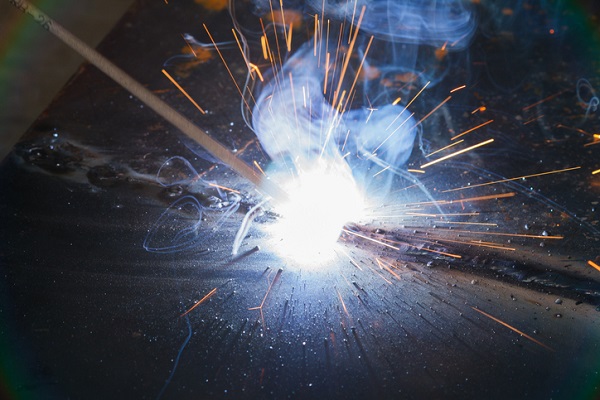
Shielded Metal Arc Welding Needs to Meet Three Criteria to Work
Since SMAW is something you’ll learn in welding technician training, it’s important to remember that there are three steps the electrode in any SMAW application must take to properly weld. These are the ability to shield both the weld metal and the arc, the adding of metal to the weld, and the ability to sustain the arc. Furthermore, SMAW has three additional functions when the covering is heated well enough, which are the formation of the shield for the metal and the arc; the covering ionizing so that it can support the arc plasma; and the fluxing of the metal so it forms a cover on the weld bead as it cools, eventually giving off gases to avoid any contamination to the weld.
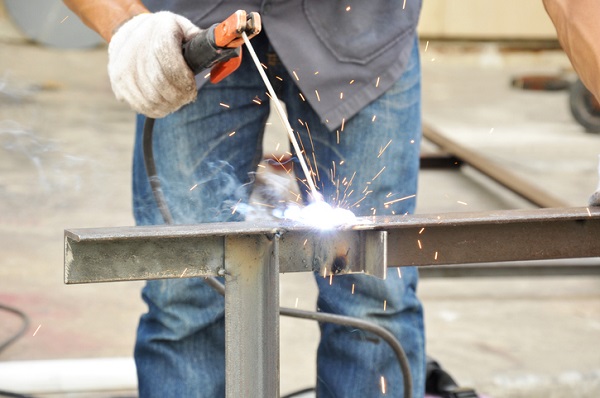
There Are Many Upsides to This Type of Welding—and Various Things it Can Weld, Too
The advantages of performing SMAW for your welding career are vast. Not only can it suitably weld a number of different alloys, metals and steels, but it’s also a process with various other upsides, not the least of which are its simplicity and relatively inexpensive nature. For example, the SMAW process isn’t as draft or wind-sensitive as gas shielded arc welding can be, nor does it necessitate the use of auxiliary gas shields. SMAW can also be applied to various welding positions, as well as its electrodes being able to access, and be applied to, hard-to-reach areas such as blind spots. Given how versatile and productive the process can be, it’s easy to see how advantageous it is for many welding projects.
Want to get your welding diploma?
Contact North American Trade Schools for more information about our Welding diploma program!



